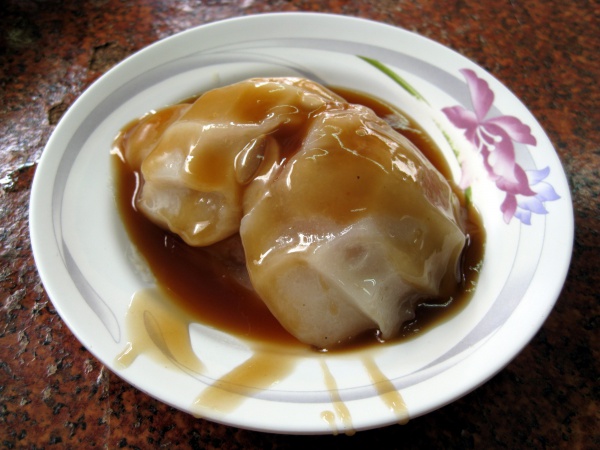Facts About Ba-wan
Ba-wan is a quintessential Taiwanese street food that is nearly impossible to overlook. Picture a translucent, disk-shaped dumpling crafted from sweet potato starch, brimming with a delectable mixture of pork, bamboo shoots, and shiitake mushrooms. It’s then crowned with a sweet and savory sauce that perfectly complements its filling.
While you can encounter various iterations of ba-wan throughout Taiwan, the Changhua-style version is often hailed as the gold standard. In Changhua County, particularly in Lukang, ba-wan is known as "bahhoe" meaning "block" in Taiwanese Hokkien, which refers to its distinctive shape.
The dough is a unique blend of cornstarch, sweet potato starch, and rice flour, imparting a chewy, sticky, and slightly gelatinous texture. When cooked, it adopts a greyish translucent appearance. Traditionally, ba-wan is steamed, but you can also find them deep-fried for a crispy exterior or gently poached in oil to reheat without drying out.
The origins of ba-wan date back to 1898 in Beidou township, Changhua County. According to legend, a scribe named Fan Wan-chu created them during a period of severe flooding as a form of disaster relief food. Since then, ba-wan has evolved into a national favorite, easily found at night markets all over Taiwan.
One of the great advantages of ba-wan is its convenience. They can be pre-made and stored, then quickly reheated in oil before serving—similar to potstickers or steamed buns. Whether you're wandering through a bustling night market or simply looking for a quick and tasty snack, ba-wan is a must-try!
